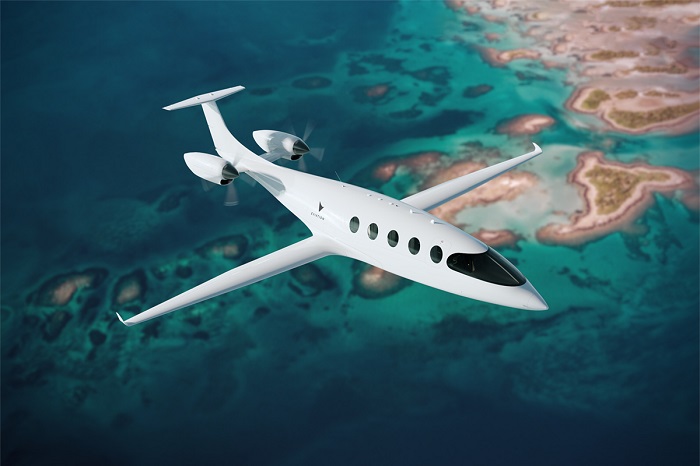EarthTalk®
From the Editors of E – The Environmental Magazine

Eviation’s all-electric Alice airplane Israel’s Eviation can fly for an hour on a battery charge with zero emissions.
Dear EarthTalk: You hear a lot about electric cars and trucks these days, but has there been any carbon-saving innovation lately in trains and even planes?– Michael C., Summit, NJ
Many environmentalists consider travel an environmental “sin” given the carbon emissions generated by the cars, buses, trains and planes we use to get from Point A to B, but it’s up to each of us to determine how much travel is enough. In the meantime, airplane and train manufacturers and the industries that serve them are doing a lot to green their operations and products.
As for airplanes, manufacturers are working hard to replace toxic materials with greener ones. One example is chrome, a carcinogen heavy metal that is used extensively within passenger cabins and elsewhere in many airplanes. Manufacturers have developed 3D printing using carbon fiber compounds to replace chrome and many other metals used throughout a plane’s body. This also cuts down significantly on weight, which in turn saves fuel and emissions.
Fuel substitution is another sustainability fix that airlines are starting to take seriously. One particularly green substitute fuel comes from Fulcrum BioEnergy, which converts garbage into jet fuel that can augment regular carbon-intensive jet fuel and thus save on emissions. The company’s technology utilizes chemical breakdowns of waste to produce fuels that mix with normal jet fuel, cutting emissions by as much as 20 percent.
Not surprisingly, electric drive planes are also on the horizon. Israel’s Eviation has a zero-emission prototype plane that can fly up to an hour after charging for 30 minutes.
Rail companies are pursuing similar strategies, such as electric powered trains. Gravity powered trains use gravitational force—generated by braking (like hybrid electric cars)—to power their batteries. Train builders are also starting to embrace electric drive systems to save on fossil fuel consumption. These newer hybrid systems can cut emissions and fuel usage by up to 11 percent, which amounts to an average fuel savings of some 6,000 gallons of diesel per trip.
Of course, it is important to understand that travel is often a luxury. And while it can be an essential—such as seeing far-flung relatives or participating in work trips—it can often be minimized. To minimize your carbon footprint and—more important—minimize damage to our imperiled planet, consider reducing your plane travel. While both forms of transit are problematic, trains are a better choice for the planet.
The growth of the transit industry and a globalized economy mean that travel is inevitable as a habit, necessity and pastime. Nevertheless, it’s important not to take plane and train travel for granted. The less you travel, the lower your carbon footprint will remain, so it’s up to you to find the right balance between maintaining your quality of life and helping fight global warming. Maybe in the future we can travel great distances without any environmental guilt. But until then, it’s better to think twice about taking any trips that aren’t absolutely necessary.
CONTACTS:
Five Rail Sustainability Trends for 2021, freightwaves.com/news/5-rail-sustainability-trends-for-2021
Airlines want to make flight more sustainable. How will they do it? cen.acs.org/environment/sustainability/Airlines-want-make-flight-sustainable/99/i32#the-search-for-greener-airplane-materials
EarthTalk® is produced by Roddy Scheer & Doug Moss for the 501(c)3 nonprofit EarthTalk.
See more at https://emagazine.com
To donate, visit https//earthtalk.org
Send questions to: question@earthtalk.org
